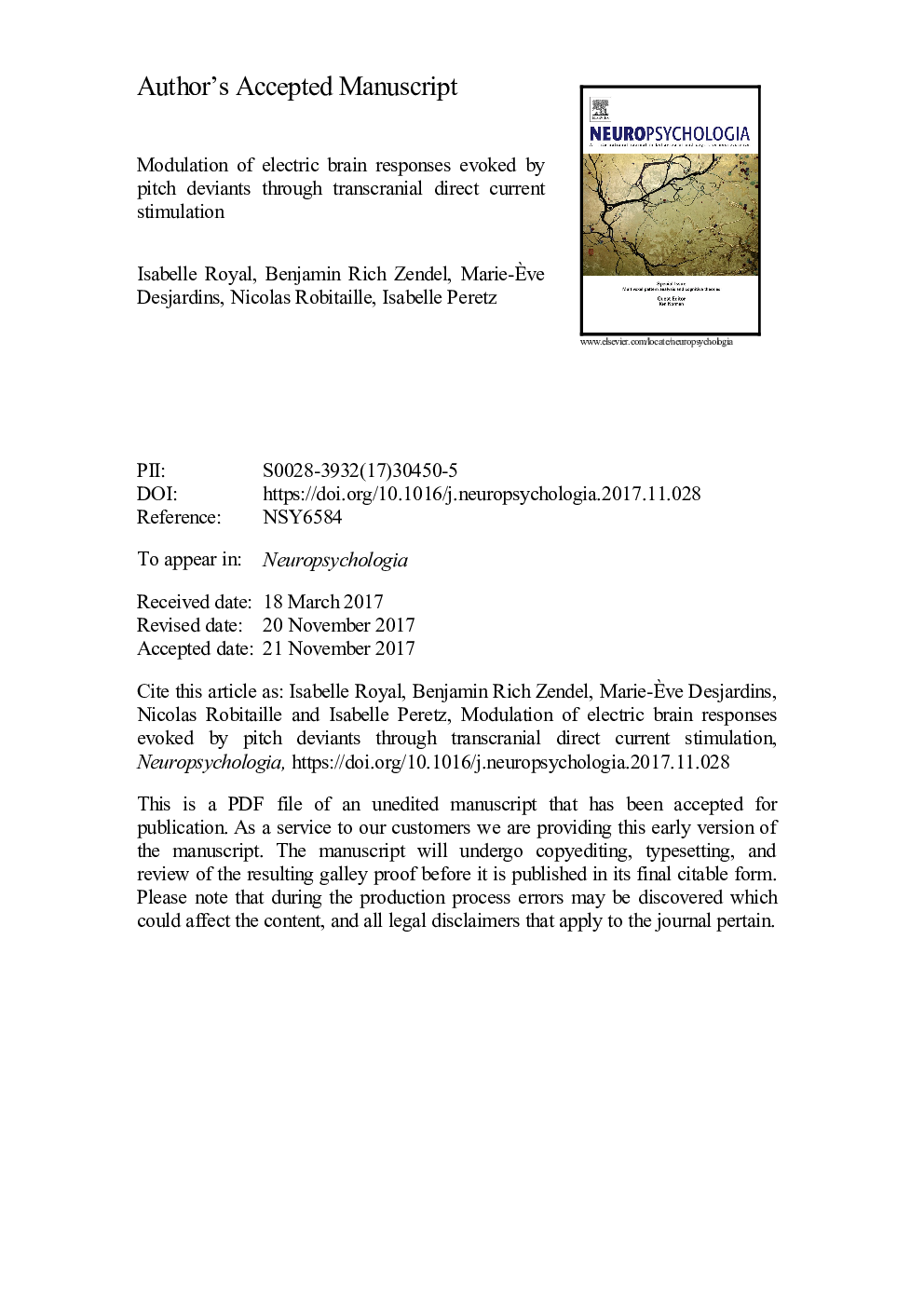| Article ID | Journal | Published Year | Pages | File Type |
|---|---|---|---|---|
| 7318083 | Neuropsychologia | 2018 | 40 Pages |
Abstract
Congenital amusia is a neurodevelopmental disorder, characterized by a difficulty detecting pitch deviation that is related to abnormal electrical brain responses. Abnormalities found along the right fronto-temporal pathway between the inferior frontal gyrus (IFG) and the auditory cortex (AC) are the likely neural mechanism responsible for amusia. To investigate the causal role of these regions during the detection of pitch deviants, we applied cathodal (inhibitory) transcranial direct current stimulation (tDCS) over right frontal and right temporal regions during separate testing sessions. We recorded participants' electrical brain activity (EEG) before and after tDCS stimulation while they performed a pitch change detection task. Relative to a sham condition, there was a decrease in P3 amplitude after cathodal stimulation over both frontal and temporal regions compared to pre-stimulation baseline. This decrease was associated with small pitch deviations (6.25 cents), but not large pitch deviations (200 cents). Overall, this demonstrates that using tDCS to disrupt regions around the IFG and AC can induce temporary changes in evoked brain activity when processing pitch deviants. These electrophysiological changes are similar to those observed in amusia and provide causal support for the connection between P3 and fronto-temporal brain regions.
Keywords
Related Topics
Life Sciences
Neuroscience
Behavioral Neuroscience
Authors
Isabelle Royal, Benjamin Rich Zendel, Marie-Ãve Desjardins, Nicolas Robitaille, Isabelle Peretz,
